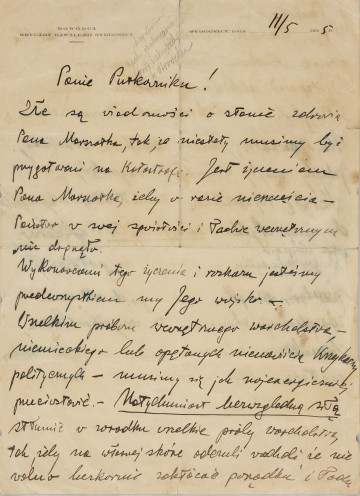
Soda siphon
1950 — 1970
National Museum in Szczecin
Part of the collection: Independent twenty years of the Second Polish Republic
After 1918, the equipment of the soldiers of the Polish Army included many pieces left by the invaders, but also French equipment – from the resources of the Polish Army in France led by General Józef Hallera (1873–1960) or American – purchased from the surplus of the Allied troops. In the Second Polish Republic, matters related to equipment – also known as an outfit – which is a soldier's individual equipment, although not weapons, i.e. protective clothing, backpacks, haversacks, canteens, canteens or essentials, were dealt with by the Commissary Department of the Ministry of Military Affairs. In the 20th century, attempts were made in Poland to create a practical canteen. The most popular pre-war models, included in the military equipment, such as a canteen model no. 31 or no. 35, were designed by the Commissary Technical Institute (1924–1939). It was a military scientific and experimental institution under the Commissary Department, having its own laboratories and experimental stations and workshops. Direct operation in military structures enabled additional tests to be carried out in the field and improvements to be made. The Technical Commissary Institute created several prototypes of canteens, produced in small series in various private companies in the country. The presented model no. 37 is also sometimes referred to as model no. 38 – produced since 1937, patented in 1938. The body of the canteen was connected to the lid by a chain, which made it difficult to loose, and thanks to the wide neck it was easy to fill with water or food in liquid form and keep clean. The original concept was for it to be a universal vessel, not only for transporting and drinking water, but also for eating with a spoon.
Author / creator
Object type
canteen, military accessory
Technique
embossing
Material
aluminum
Origin / acquisition method
donation
Creation time / dating
Creation / finding place
Owner
Muzeum Narodowe w Szczecinie
Identification number
Location / status

1950 — 1970
National Museum in Szczecin

1900 — 1945
National Museum in Szczecin

1935
National Museum in Szczecin
DISCOVER this TOPIC
Castle Museum in Łańcut
DISCOVER this PATH
Educational path